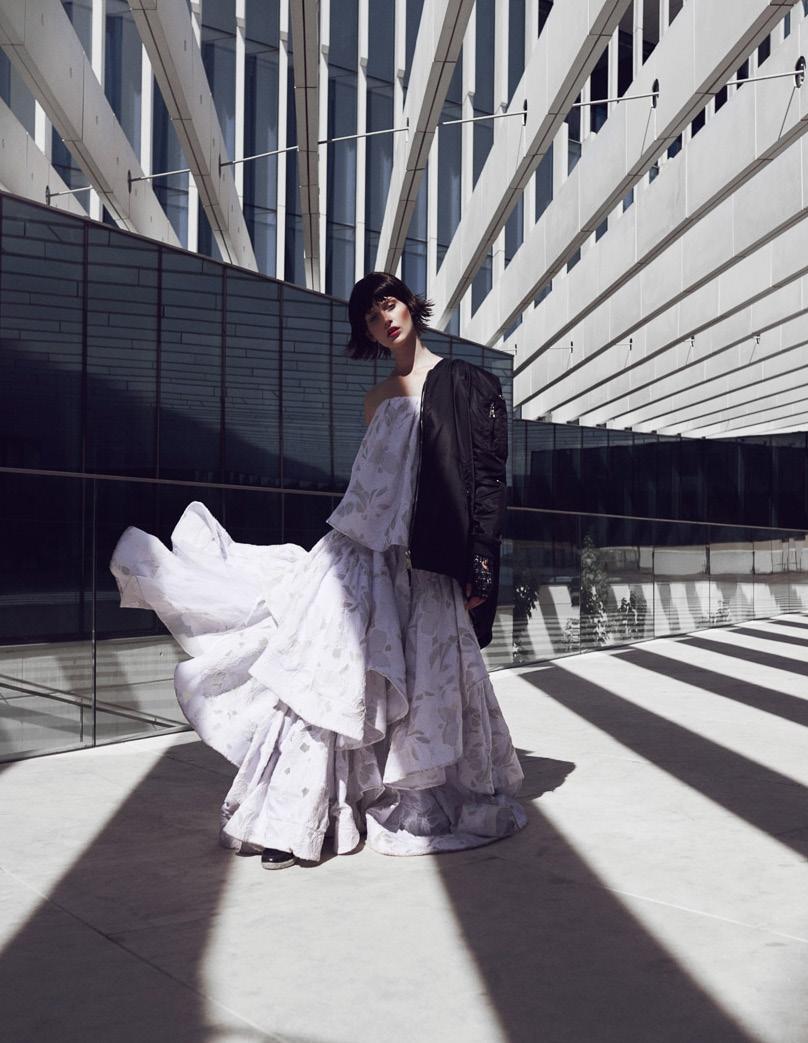
2 minute read
FASHION IN ARCHITECTURE
The two disciplines of making fashion and architecture have always been connected with each other. Even though the design objects are different, the design processes seem to have much in common. But do they? And if so: where do architecture and fashion meet?
It is obvious that designing a garment is very different to designing a building. The techniques, rhythms and spaces of fashion and architecture are actually quite different. Designing fashion is a fast, pliable process. One thinks of a certain shape or movement and the design can fairly easy be visualized and realized. Changes made to a design are done fast and intuitive. Also, when creating a garment, delicate and intricate work is required. When working with fabrics, and the human body, the smallest details can make the biggest difference. Architecture, on the other hand, is a slow profession. Changes aren’t as easily made and have bigger consequences. Construction and realism play a bigger part in the design process, for the building needs to be safe and solid. The realization and construction phase is, of course, a very long process (Crewe, 2010).
Advertisement
Aside of all the differences, fashion and architecture do share a lot. They both express ideas of cultural, social and personal identity. Reflecting the interests and ambitions of a generation, they give a voice to culture. Fashion and architecture, among many other creative outlets, show the face of a space (city) or time (generation). One does so by dressing bodies, the other by dressing places (Juinio, 2012).

Fashion designers and architects can be a great source of inspiration to each other. This can flow into iconic collaborations, such as the Prada Transformer. The Italian fashion house of Prada worked together with Dutch starchitect Rem Koolhaas to create a standout installation. It was an interactive accommodation for cultural events situated in Seoul, Korea. The design consists of four basic geometric shapes – a circle, a cross, a hexagon, a rectangle – leaning together and wrapped in a translucent membrane. The Transformer can be rotated on each side depending on the event, with four different facades and floor plan configurations, so that floors become walls and walls become the ceiling (Zargani, 2008). Prada and Koolhaas worked very closely together on this piece of artwork. They are both designers famous and successful because of their radical approaches to design, each in their own design field.
By looking at fashion design and the industry we can create new possibilities for the ways in which we look at and understand the built environment. Fashion can show the limits and possibilities of new materials and open up a space to rethink the way we see architecture. The example of a cross-disciplinair collaboration shows the potential to transform the way we envision accomodation, interaction, space and the city, creating new possibilities for design. We need to unite in a mutual desire to design to create amazing things (Crewe, 2010). //
Fasion is architecture, its a matter of proportions coco chanel

SOURCES Crewe, L. (2010). Wear: Where? The Convergent Geographies of Architecture and Fashion. Juinio, A. (2012). Fashion and Architecture. Vogue Italia. Zargani, L. (2008). Prada’s Transformer. WWD. Schön Magazine (December 2016) Justine Guneau by Andreas Ortner Illustration: Christopher Fredeick Jones










